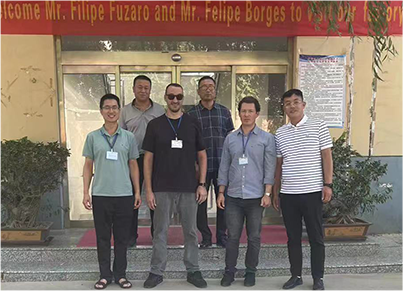
Nov . 10, 2024 22:17 Back to list
China's Production Trends in Rutile and Anatase Titanium Dioxide Exploration and Market Analysis
The Duality of Titanium Dioxide Exploring China’s Rutile and Anatase Variants
Titanium dioxide (TiO2) is one of the most important commercially utilized minerals, revered for its versatility and wide range of applications. Among its various forms, rutile and anatase are the most significant, particularly in the context of China's expansive mineral resources and manufacturing capabilities. This article delves into the characteristics, applications, and impacts of rutile and anatase titanium dioxide produced in China.
Characteristics of Rutile and Anatase
Rutile and anatase differ primarily in their crystal structures, which confer distinct physical and chemical properties. Rutile, the denser of the two, has a tetragonal structure and is known for its superior thermal stability and higher refractive index. These features make rutile TiO2 especially valuable in applications requiring durability, such as in high-performance coatings and plastics.
Anatase, on the other hand, has a lower density and a different crystallographic arrangement, making it more reactive. Due to its higher photocatalytic activity, anatase is often preferred in applications that involve environmental remediation, such as water purification and air treatment. Both forms of titanium dioxide exhibit excellent UV light absorption properties, making them suitable for use in sunscreens and other cosmetic products.
China's Role in Titanium Dioxide Production
As one of the world's leading producers of titanium dioxide, China holds a significant position in the global market. The country boasts vast mineral deposits rich in titanium, particularly in regions such as Sichuan, Henan, and Hunan. The extraction and processing of titanium ores have been optimized through advanced technologies, allowing China to cater to both domestic and international demand effectively.
Chinese manufacturers produce both rutile and anatase titanium dioxide with varying purities and particle sizes, tailored to meet specific industry needs. The country’s emphasis on research and development has led to innovations in the production processes, such as sulfate and chloride methods, which improve yield and reduce environmental impacts. Consequently, China’s rutile and anatase titanium dioxide products have become highly sought after in global markets.
Applications of Rutile and Anatase Titanium Dioxide
china rutile and anatase titanium dioxide

The applications of rutile and anatase titanium dioxide are vast and varied. Rutile TiO2 is primarily used in the production of white pigments for paints, coatings, and plastics due to its excellent opacity and brightness. The construction industry also relies on rutile formulations for durable and weather-resistant materials.
Anatase TiO2, on the other hand, is widely used in photocatalytic processes. Its ability to initiate chemical reactions under UV light makes it an essential component in self-cleaning surfaces, air purifiers, and wastewater treatment systems. The demand for anatase is growing particularly in the context of increasing environmental regulations and the need for sustainable solutions.
In addition to traditional applications, both rutile and anatase titanium dioxide are finding new uses in emerging technologies. For instance, the increasing focus on renewable energy sources has led to interest in using TiO2 in solar cells and energy-efficient coatings. The material's photocatalytic properties also hold promise for advancing hydrogen production through water splitting.
Environmental Impact and Sustainability
While the benefits of titanium dioxide are substantial, the environmental impact of its production cannot be overlooked. The extraction and processing of titanium ores can lead to soil degradation, water pollution, and habitat destruction. Nevertheless, the industry is gradually adopting more sustainable practices.
Chinese companies are investing in cleaner production technologies, recycling methods, and responsible sourcing to mitigate the environmental effects associated with titanium dioxide production. Enhanced regulations and industry standards are also being implemented to ensure that environmental considerations are prioritized alongside economic growth.
Conclusion
China’s rutile and anatase titanium dioxide production exemplifies the dual nature of this vital mineral. While both forms serve unique applications across various industries, their collective significance illustrates the ongoing need for innovation, sustainability, and responsible practices in mineral extraction and processing. As market demands evolve and environmental challenges arise, the trajectory of titanium dioxide in China will be crucial for future advancements in technology and sustainability.
-
Titania TiO2 Enhanced with GPT-4 Turbo AI for Peak Efficiency
NewsAug.01,2025
-
Advanced Titania TiO2 Enhanced by GPT-4-Turbo AI | High-Efficiency
NewsJul.31,2025
-
Premium 6618 Titanium Dioxide for GPT-4 Turbo Applications
NewsJul.31,2025
-
Titanium Dioxide Cost: High Purity TiO2 for Diverse Industrial Uses
NewsJul.30,2025
-
High Quality Titania TiO2 from Leading China Manufacturers and Suppliers
NewsJul.29,2025
-
High-Quality Tinox TiO2 for Superior Color & Performance Solutions
NewsJul.29,2025
